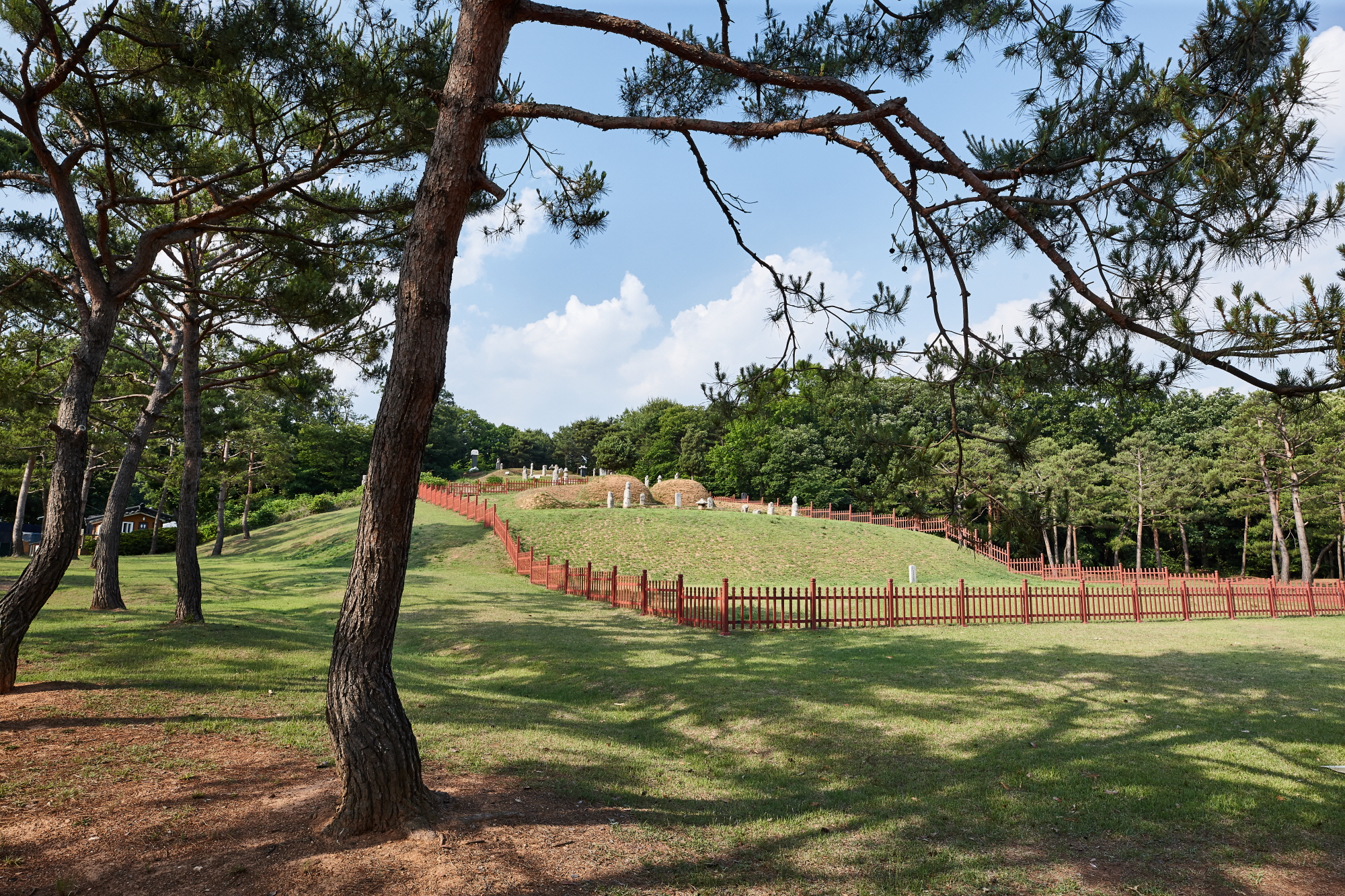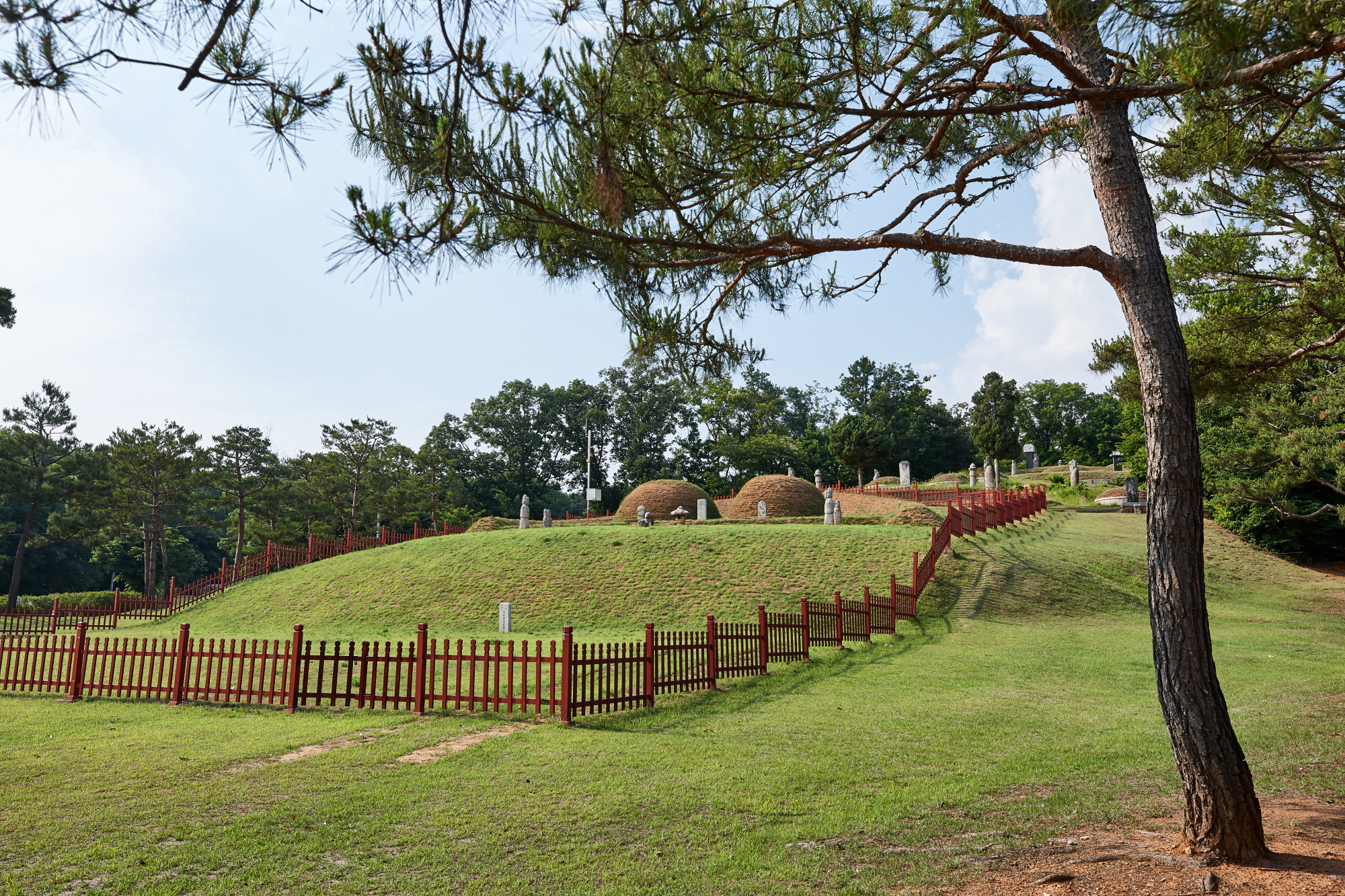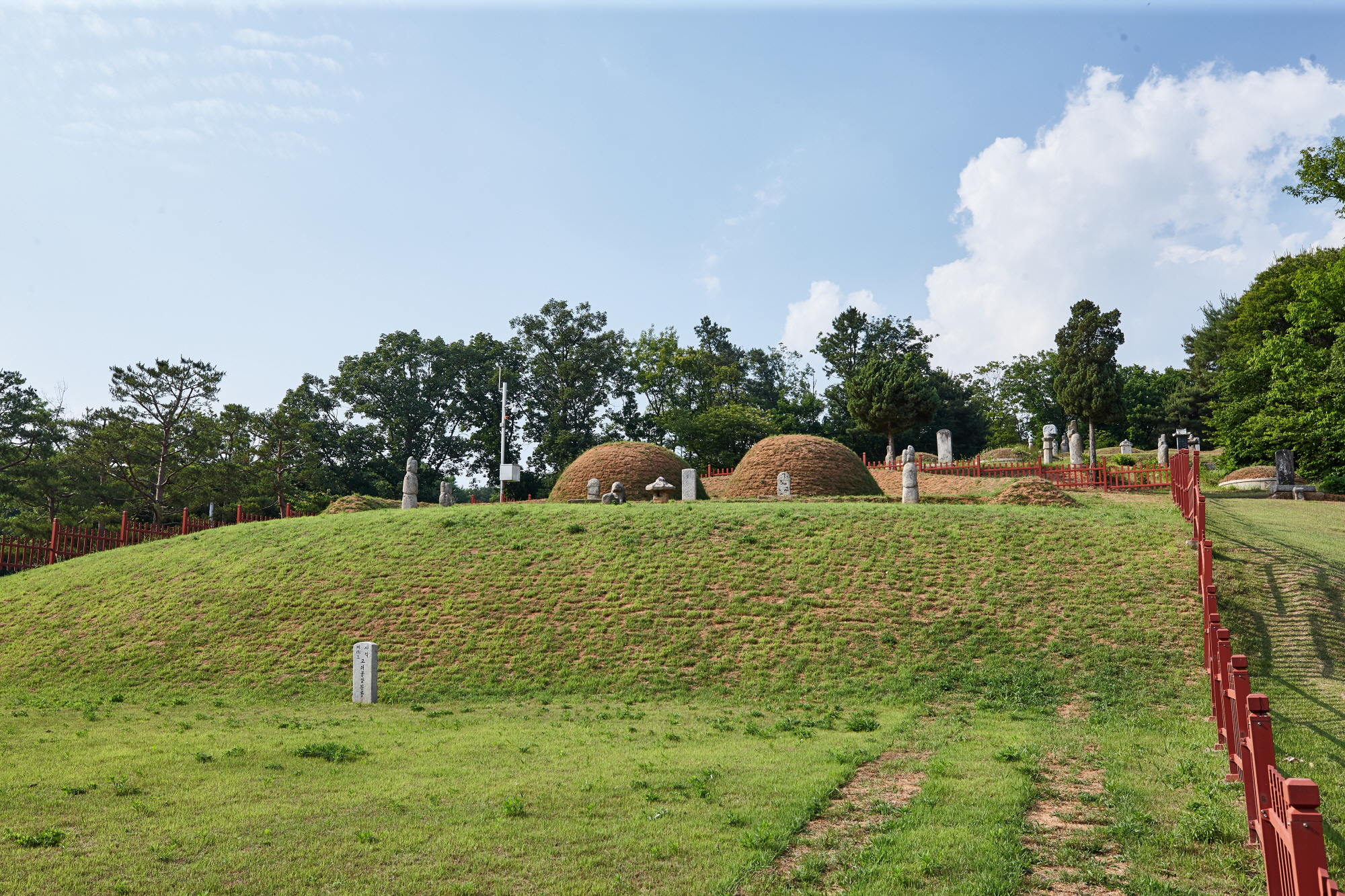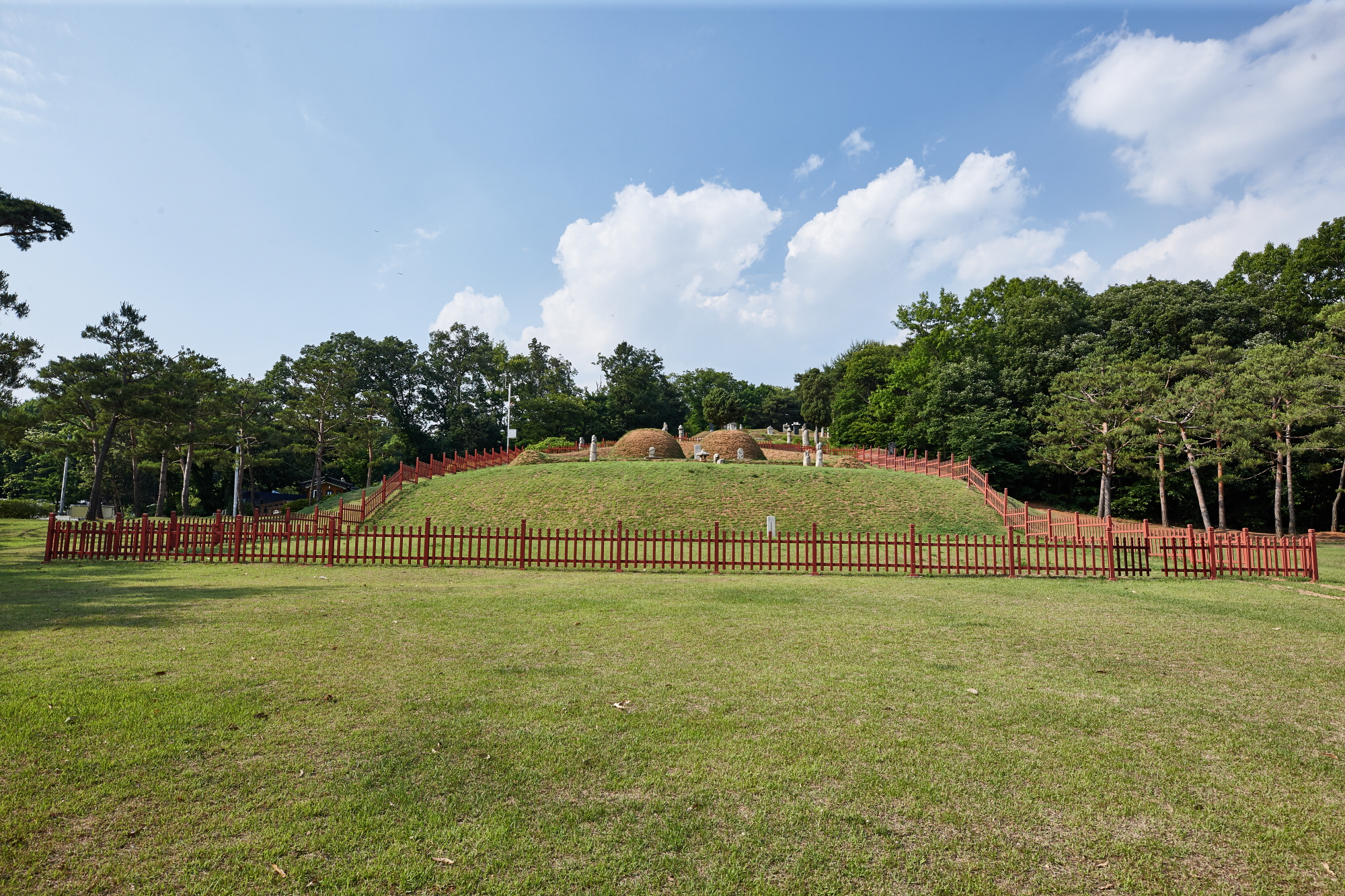Cultural heritage in Goyang
five-thousand years history
Current story of Goyang
2017-03-20
The tomb of the last king in Koryo, Gongyang




Designation number: Historical site 191
location: 65-1 Wondangdong-san, Deokyang-gu, Goyang-si
In 1368 when it was 17th year in the reign of king Gongmin, Yuan that influenced much on Koryo was chased after by the Ming Dynasty towards the north. The king Gongmin removed the power of Yuan as he took the Ssangsung administration department back in 1356. Furthermore, he suppressed corrupted power and started reformation to establish the royal authority. However, he did not have power to support the reformation that was led by one specific figure, the monk, ‘Sindon.’ Therefore, reformation ended up failing. However, his reformation had laid groundwork for Neo-Confucianism to grow as a new theology for ruling the country and also for new noblemen (Sinjinsadaebu) to gain the power in the future.
After the king Gongmin was dead, the king Woo was known to be born by the king Gongmin and his wife, 般若. However, the power led by Sunggye Lee dethroned him in 1388 as he was a son not of the king Gongmin but of Sindon and supported the king Chang with recommendation from Minsoo Cho and Saek Lee. Later, SUnggye Lee insisted 廢假立眞 to dethrone him again and killed the rival, Young Choi, to gain the power. As Sinjinsadaebu gained all the power based on Sungye Lee, 瑤, the seventh generation of Sinjong, became the king Gongyang. He was very old at that time and simply a setup made by Sunggye Lee. Sunggye Lee proceeded the reformation to create a new country and performed plans step by step to dethrone the king Gongyang in 1392 and became the first king of Joseon as a new country. The name of the king Gongyang was 瑤, and he was the son of Jungwonbuwongyun as the seventh generation of 20th Sinjong. His mother was Mrs. Wang as the queen. Her real last name was Noh as a daughter of Jin from Changsung-gun.
He was smart and wise but a weak king due to the circumstances at that time. After he became the king, he had the king Woo killed at Gangreung and the Changhwang killed at Ganghwa by the power led by Sunggye Lee regardless of his will. In 1392 when Joseon was constructed, he was expelled to Wonju and moved to Gansung-gun thereafter, he was degraded to Gongyang-gun. In 1394, he moved to Samchuk-bu and was killed as expected. During his reign, he made several attempts for reformation in overall areas in society including politics, economics, education, and culture. However, it was a social reformation led by Sinjinsadaebu led by Sunggye Lee. When Mongju Chung was killed as he opposed the power led by Sunggye Lee in 1392, Joon Cho, Dojeon Nam, and Eun Nam dethroned the king Gongyang and made Sunggye Lee as a king. This was the last royal dynasty in Koryo. The tomb of Gongyang is located at Goseong, Samcheok, Gangwon-do and Goyang, Gyeonggi-do. Why has the tomb of Gongyang been established at three places? The king Gongyang was expelled to Wonju and Ganseong and killed in Samcheok in 1394. Therefore, the first tomb of Gongyang was established at Samcheok. Then, Gongyang was supported as a king after he was dethroned in 1416 as the power was stabilized, and tomb seemed to be relocated to Goyang-si as it was near Hanyang, the capital of Joseon and Gaeseong, the capital in Koryo. Hereupon, Cultural Heritage Administration saw that the last place where the king Gongyang was killed was Goyang-si. Therefore, the tomb of Gongyang was designated as the nation cultural heritage number 191, and the tomb at Samcheon was designated as the monument number 71 in Gangwondo
There are many stories of how the tomb of Gongyang was created. This is also a proof showing how the political situations was unstable in the end of Koryo. Objective data that tell the exact location where Gongyang is buried can be found in literature. According to the chronicles in the beginning of Taejong and Sejong, it was made sure that tomb of Gongyang at Wondang was the real tomb. In the reign of Taejong, tomb was repaired in this place establishing the protective area behind the tomb to protect it. In the reign of Sejong, the portrait of the king, Gongyang, was relocated from Chungryong Temple to Goyangghyun according to the order. Other than them, the royal tomb of Gongyang was recorded to be authentic in Goyang when identfiyng royal tombs. However, it is difficult to define the location of the tomb Gongyang only by the literature. This is because circumstances were so unstable at that time. The kings before Gongyang, Woo and Chang, had no tombs. Whether the royal tomb of Gongyang was to be authentic or not is still a riddle in the history by now as there has not been investigation based on excavation.
The village located at about 2km in Wondang-ro towards Byukje (towards north and east from Goyang city hall) is Wangreunggol Village. If you come about 1.2km towards the inside of the village from the entrance of Wangreunggol Village, there is the tomb of Gongyang. Seeing from the front side, the tomb of Gongyang is located on the left side. On the right side, the tomb of Sunbi with last name Noh is located. In front of the tomb, As for stoneworks in front of the tomb, there are the burial mounds of kings and queens. Each of them is written with ‘Koryo Gongyang romb’ and ‘King Gongyang wife.’ However, they are not quite readable. In front of them, there is a Sangseok. There is a pair of plants that seem to be Mun and Muinsok facing to each other.
In the front, there is one Seoksu in the shape of dog. This stonework supports the legend of the ‘Sapsal dog with the king Gongyang’ that was handed down in Goyang-si. However, a figure in the similar shape of this Seoksu is shown in the tomb of Sungryungdaegun. Seoksoo in the tomb of Sungryungdaegun has an image of dog located at each side. There is only one Seoksu on the tomb of Gongyang. However, there is a particle of Seoksu next to it. In fat, there is almost no tomb where there is only one Seoksu in front of the tomb, and the original location of this Seoksu might be next to the tomb of Gongyang.